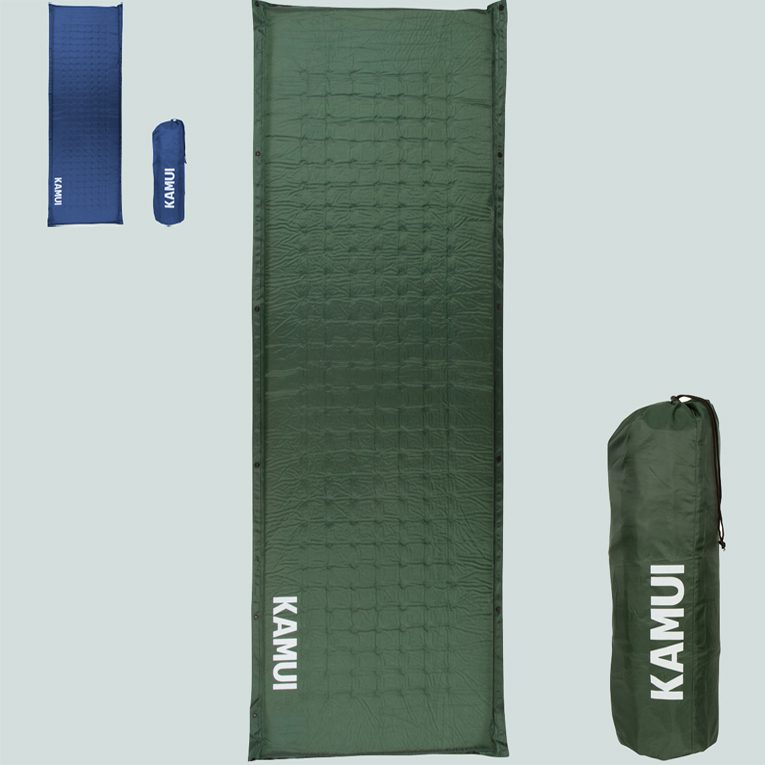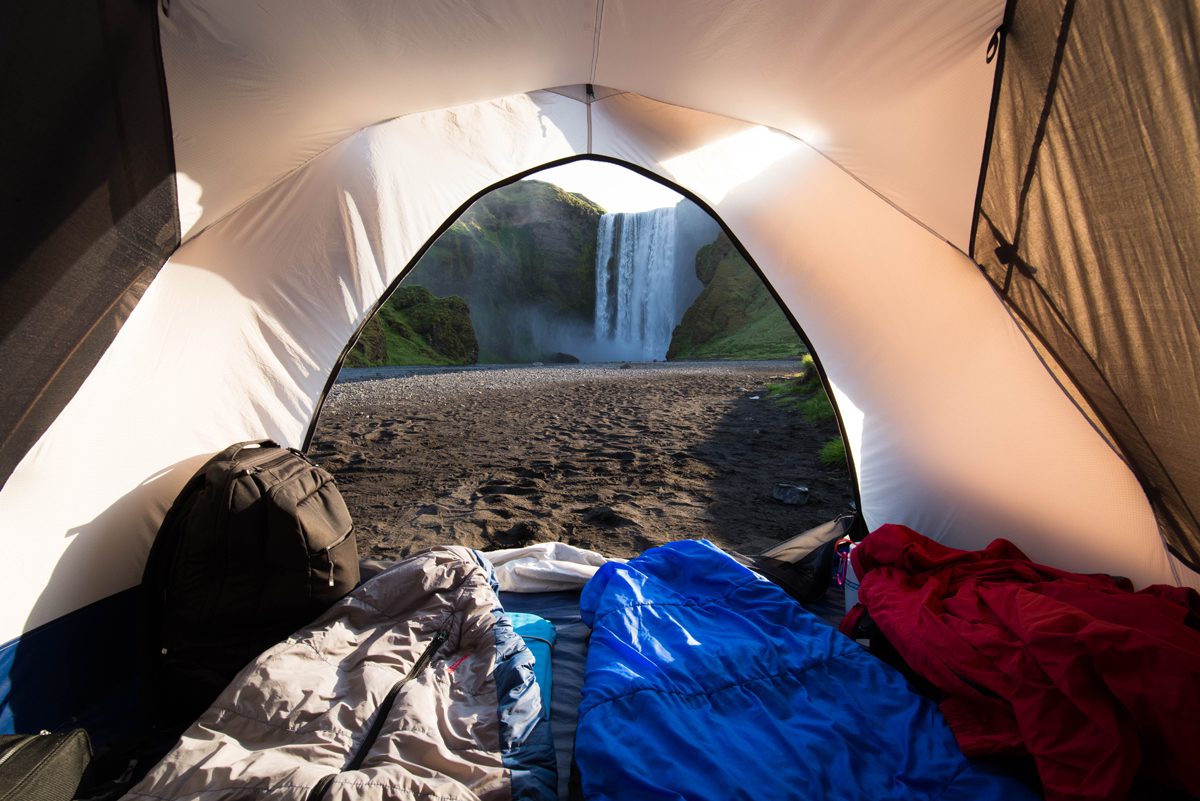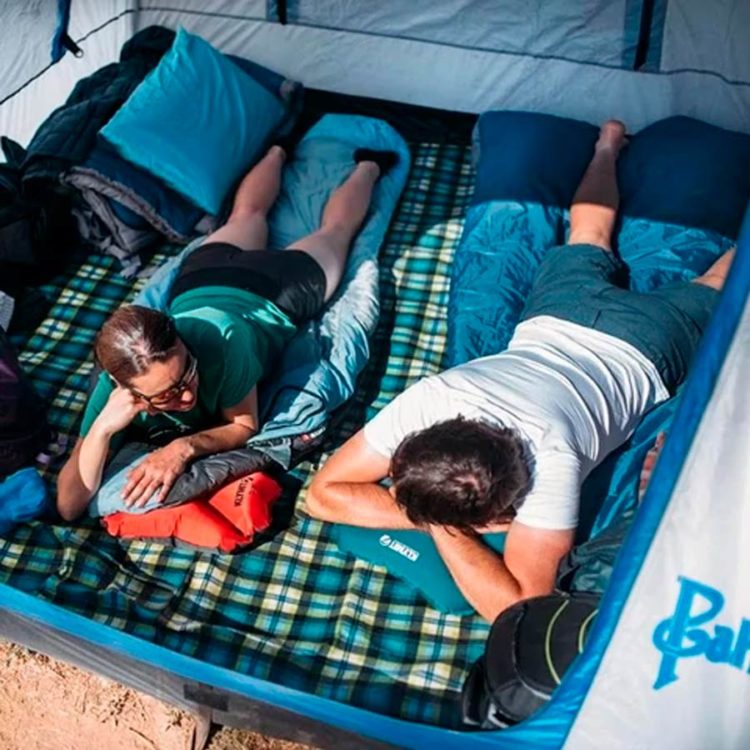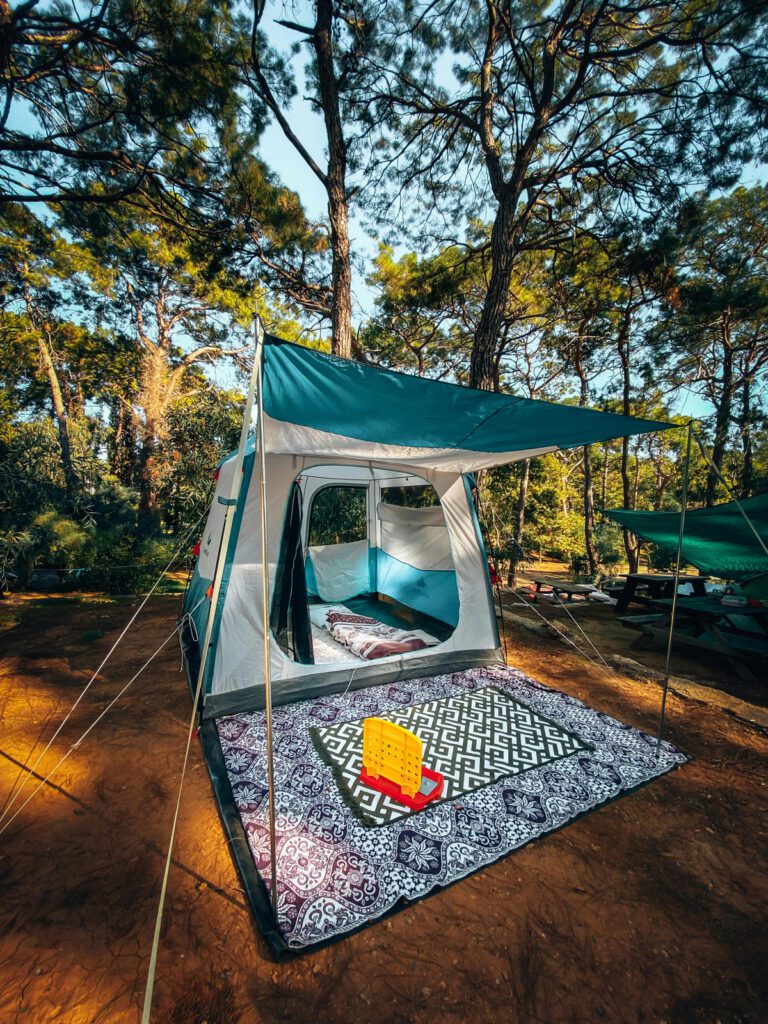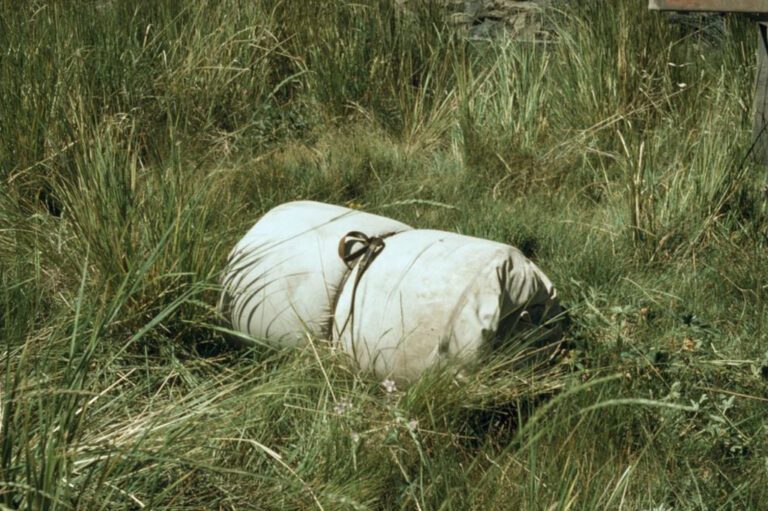Phone
+1-650-666-095
Contact E-mail
[email protected]
Address
16192 Coastal Hwy, Lewes, DE 19958-3608
How to Use Self Inflating Sleeping Pad? an Expert’s Guide Made Simple


There are some pieces of camping gear you can probably go without, but a sleeping pad certainly isn’t one of them. We are here to help you with how to use self inflating sleeping pad for the next trip you’re heading out to.
Having one of these essential items is a must for any camper out there and getting a sleeping pad for camping means you don’t even have to take up much space when you pack it.
As with any important piece of camping gear though, there’s a lot to learn about. With sleeping pads, you need to know how to use them, how to clean them, and how to keep them dry and comfortable while you’re sleeping in the great outdoors. With this guide, you’ll get equipped with all of the basic knowledge of sleeping pads, that everyone needs to know, so you can use them to their full potential.
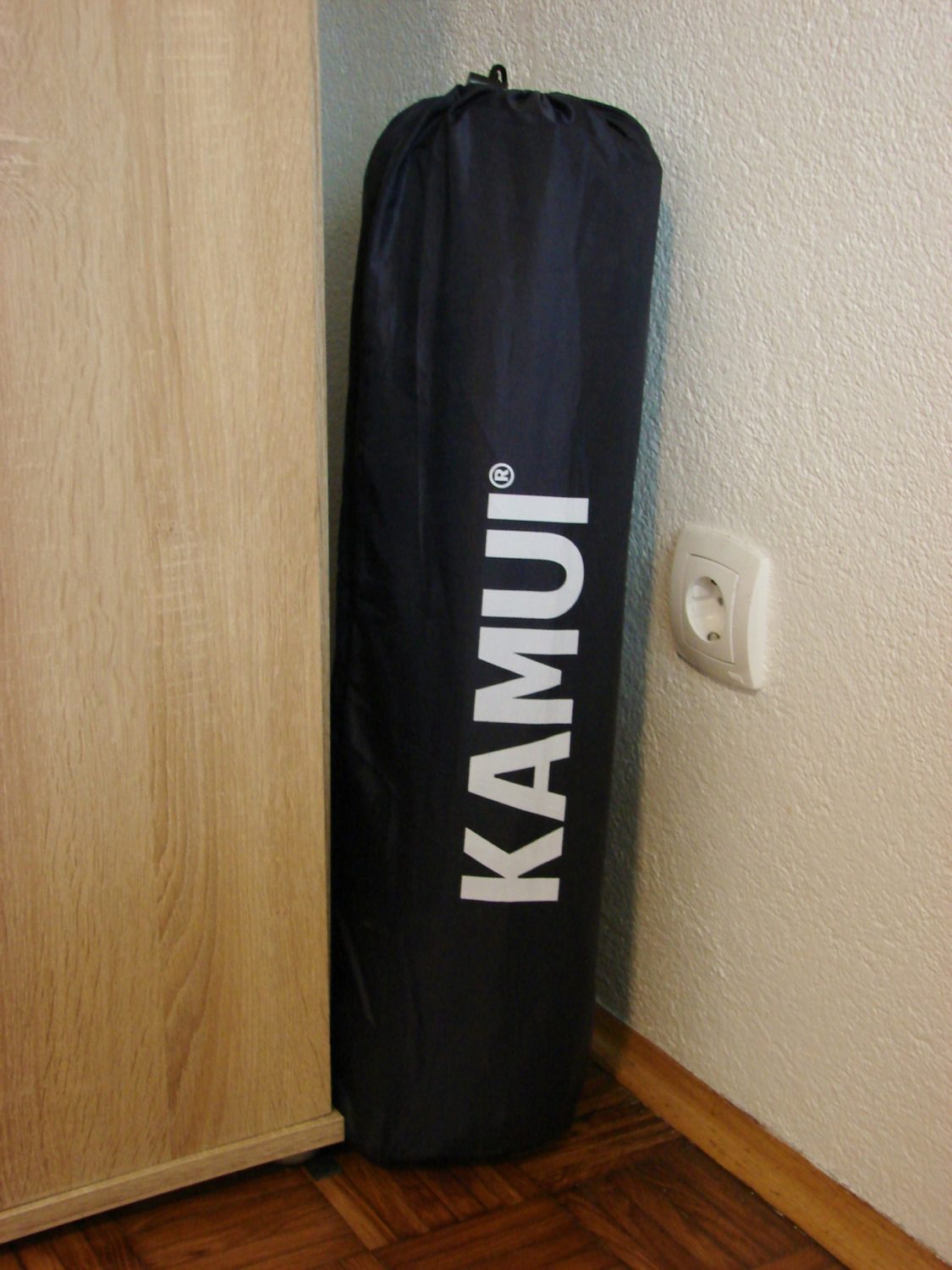

How to use a self-inflating sleeping pad?
A self-inflating sleep pad is mainly used for a tent, you simply place it underneath where your sleeping bag or other sleep accessory goes. But, they are versatile as well, with campers using them for laying down, somewhere to sit while you’re fishing, or even stacked up for extra back support for those who need it. With all of their great uses, you begin to understand why caring for your sleeping pad is just as important as your other gear.
Want to know how a sleeping pad works and what makes it tick? We have a great article, just like this one. Check it out! Next, come our tips on how to use your self-inflating sleeping pad.
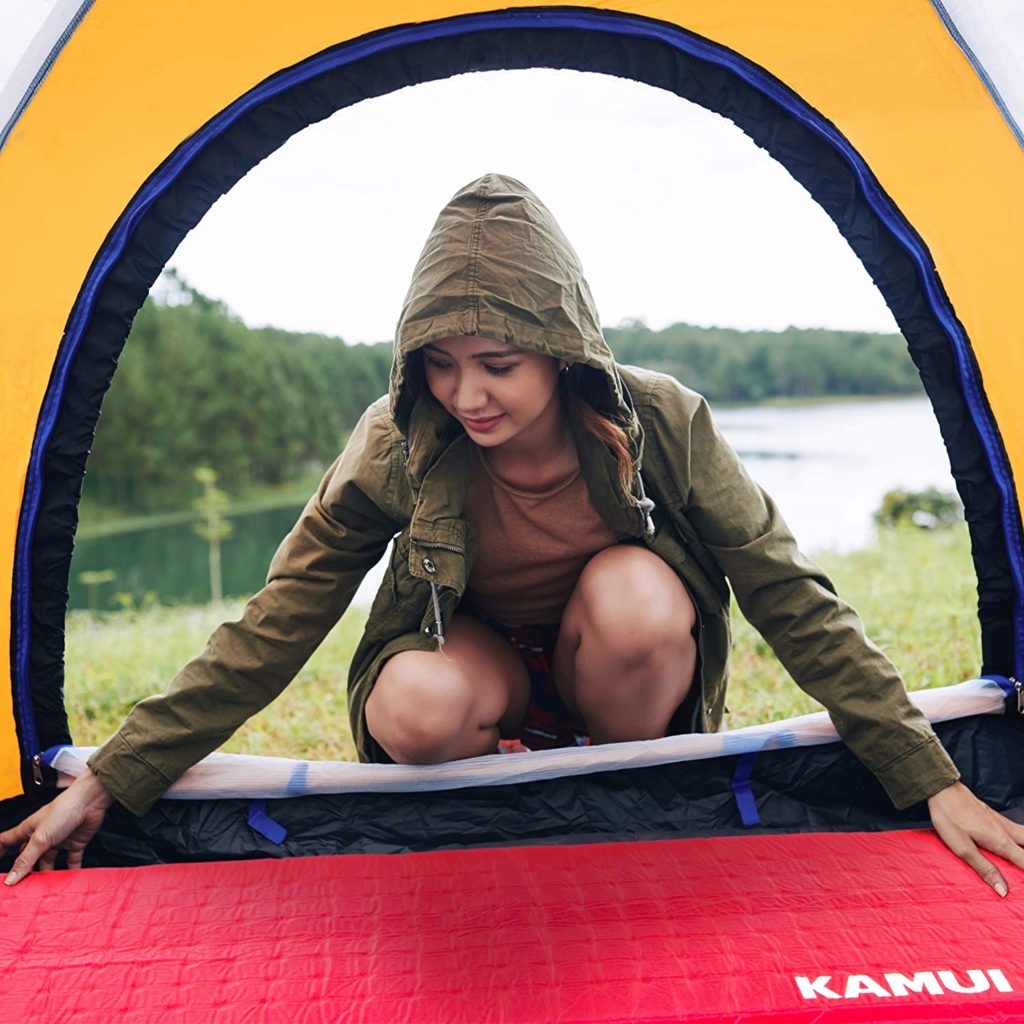

How to unroll your sleeping pad?
Imagine you’re finally at your campsite and wish to set up camp. One of the first steps in using a self-inflating sleeping pad, of course, getting it out of its stuff sack and unrolling it. Do this on a flat surface and think of safety, don’t unroll it in places that might have potential hazards for your sleeping pad. Keep it as far away as possible from sharp rocks, twigs, and pine needles.
Once you have it ready for inflation, your sleeping pad should rest straight and level on the surface, ready to self-inflate.
How to inflate my sleeping pad properly?
A picture is said to be worth a thousand words, imagine how many words is a video worth then. This is why we prepared a short video on how to use your self-inflating sleeping pad.
To make this easier for you, here is our guide to unrolling your sleeping pad:
- After unrolling your pad, open the valve on the upper left or right side of your pad. Self inflating sleeping pads have rolling valves, which you need to roll to the right side to open. Make sure you don’t roll into the wrong side, or you will close the valve and can even break it if using force.
- Leave the pad to self inflate. This can take from 5 minutes to half an hour
- Once your pad has self-inflated, if it’s your first time using it: over-inflate it. This is very important because you want to set the air volume in the pad as high as possible.
- Even if it’s not your first time using your pad, add some air manually into it for maximum comfort. Just add as much air as you want to, and do this by inflating the pad on the valve with your mouth.
- Close the valve. Voila! Your pad is inflated. If it’s your first time inflating it, make sure to leave it inflated overnight.
How to deflate my sleeping pad?
Our short video on inflating your sleeping pad also features how to deflate it. When it comes to deflating your sleeping pad after use, make sure to do the opposite of the inflation process.
How Do I care for my sleeping pad?
Your sleeping pad should be handled with care, and here are our tips on how to do it.


How Do I Clean my Sleeping Pad?
Not all sleeping pads were made equally, so choosing one that can be cleaned easily should be a top feature to look for. Camping can be dirty work sometimes, and that’s half of what makes it so enjoyable, so you can expect your pad to get dirty when it comes along for the ride.
It’s imperative to choose an inflatable sleeping pad because these can be deflated just as easily which makes for easier cleaning. While you should never place your pad directly in the washing machine, you can give it a thorough hand wash with detergent provided the valve is closed and the manufacturer’s instructions say it’s okay to do so.
For less intense cleaning, a simple spot clean with a warm rag and some dish soap is all it needs. These durable devices are made from polyester so they’re able to withstand quite a bit, but the foam within them that creates their plushness won’t always react well to a deep clean.
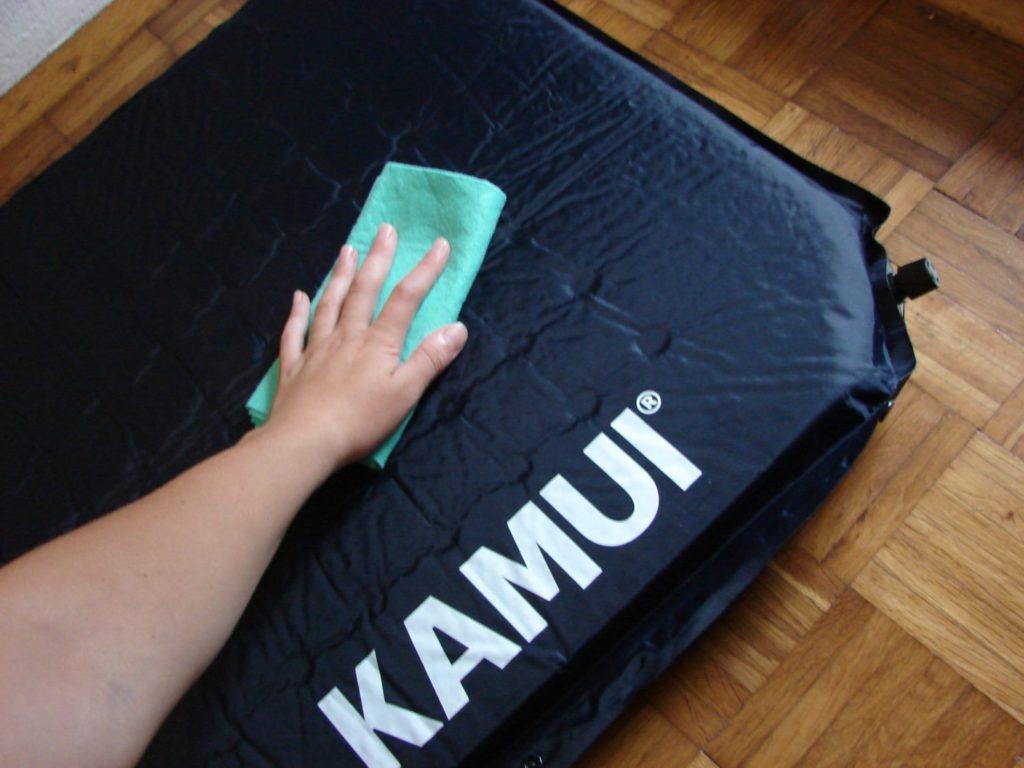

How do I Keep Sleeping Pad Dry?
One of the biggest mistakes that first-time campers make is not knowing how to care for their gear, which can end up costing quite a bit of money in replacements. Your sleeping pad needs to be taken care of just as you would any other piece of equipment, and the most important thing you can do for this is keeping it dry.
Firstly, if you think you’ll be venturing out in wet conditions, you’ll want to keep it protected from the rain or water. A good sleeping pad will come with its own carry case and this can be further protected with a waterproof covering that keeps the moisture away.
Secondly, when the time comes to set up your sleeping pad, you should consider placing a tarp or other weatherproof blanket in between it and the ground. This will prevent moisture from reaching your sleeping pad and also keep it safe from dirt and grime that is usually lurking on the campsite floor.
Taking Care Of This Important Camping Accessory
When you add up all of the bits and pieces that we use to go camping, you can see how the costs start to stack up. Therefore, choosing quality gear and taking care of it before, during, and after our camping trips is an important part of the camping process.
Provided you’ve chosen a quality sleeping pad, this accessory will last you for many years in the great outdoors. With a bit of extra attention to cleaning and ensuring that you’ve set it up correctly whenever you unpack, you’ll be able to enjoy the benefits of a comfortable night’s sleep whenever you’re out camping, all thanks to your trusty inflatable sleeping pad.
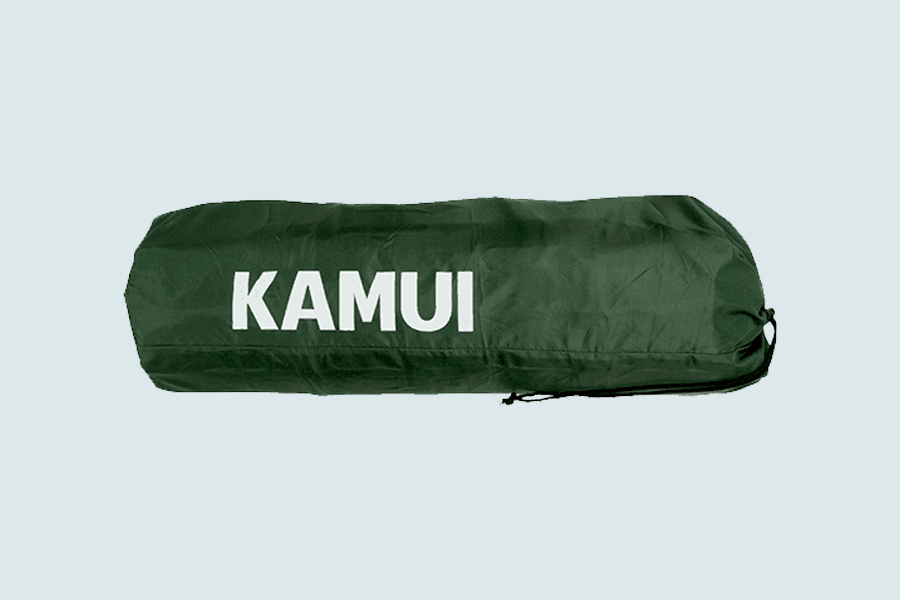

How Do I Store My Sleeping Pad?
Our short video also features how to store you pad at home, once you have used it, inflated and deflated it.
KAMUI recommends to store the sleeping pad in a dry place with it unrolled and the valve open. Ideal locations for your pads to be stored leaning against the wall, closet, or behind the bed.
Make sure you position the valve facing up, so that the moisture inside the air pad can escape and evaporate.
If this is taking too much space, you can store it in a rolled position. Once you want to use it again, make sure to do a restoration process before, do this by unrolling the pad and leaving it with an open valve.
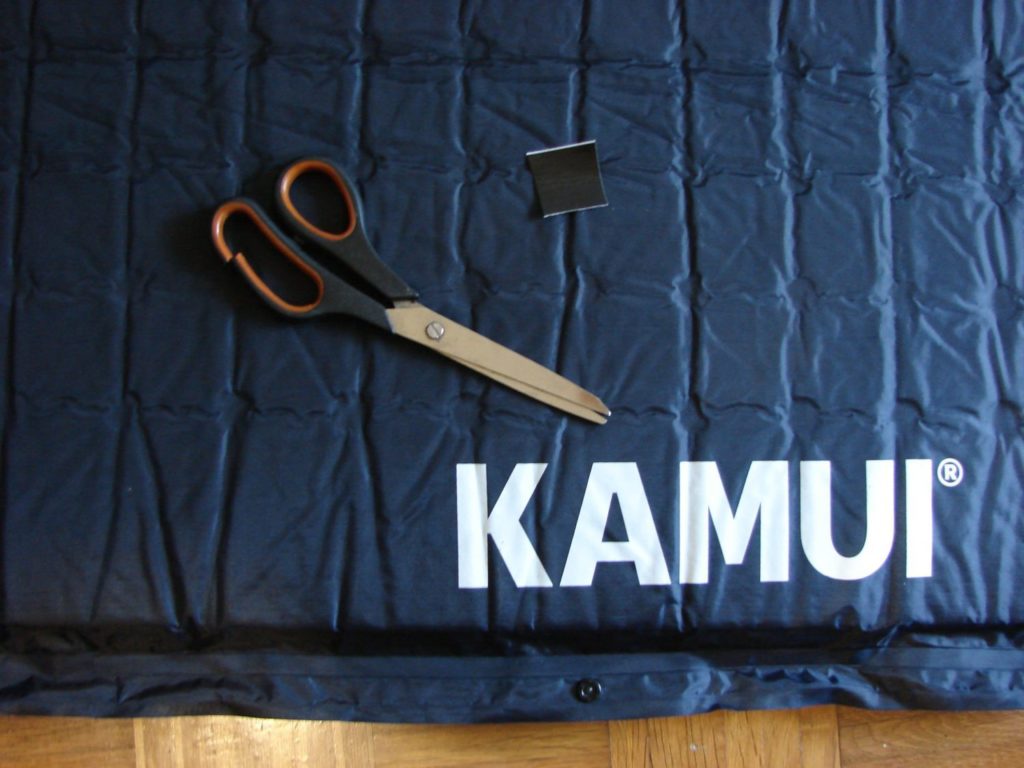

How Do I Repair my Sleeping Pad?
Accidents do happen, and placing your outdoor sleeping pad near a sharp rock or twig can puncture it. That’s absolutely fine because most manufacturers know how to use a self inflating sleeping pad, and place a repair kit into your stuff sack. Even if it doesn’t come with a kit, glue and patches can be bought on the internet. So, here is a short guide on how to repair a puncture on your sleeping pad:
- Find the leak first, mark it and clean it.
- Cut out a patch that covers the whole hole and about 1″ around it, before setting the glue. This is only needed if your patch isn’t pre-cut.
- Add glue around the hole and about 1″ around it too. Make sure to follow the instructions on the packaging.
- Place patch on the glue.
- Leave it on the sleeping pad as long as it needs to dry.
When using the repair kit, make sure to follow all of the instructions on the packaging and leaving the glue on as long as needed.
Finding A Quality Sleeping Pad
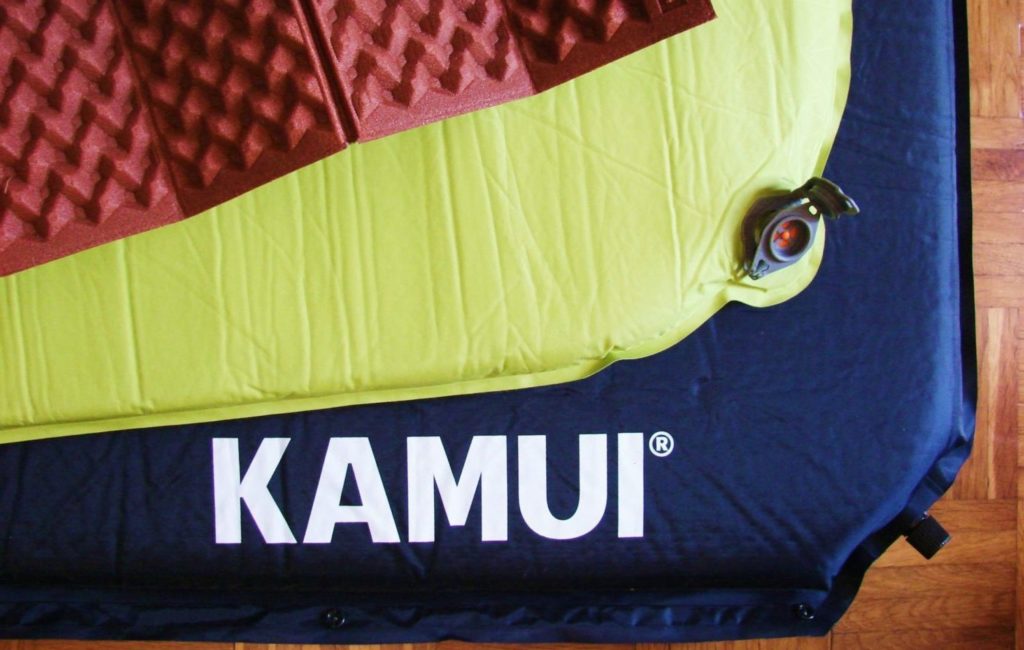

Choosing a quality inflatable camping mat is important as this will dictate how long it will last and the level of care you need to give it. Keep these features in mind when you’re choosing one that’s easy to care for and use.
Learning how to use the pad before you take it camping will be crucial to its reliability and practicality. We have a whole article on How to choose the right sleeping pad for you, and if you engage in car camping, we have a dedicated piece to help you decide which is the best sleeping pad for you.
What to Use Self Inflating Sleeping Pad For?
Obviously, most people use self-inflating sleeping pads as camping sleeping pads, backpacking sleeping pads, or for other outdoor activities, and those are their intended uses. But, one could also use it as:
- A spare mattress in the house for guests
- Travel mattress
- Seat cushion
- Backpacking, camping, and other outdoor sports cushion (instead of a chair)
- Mechanic Mat
- Hammock insulation pad
Our choice: KAMUI self-inflating sleeping pad
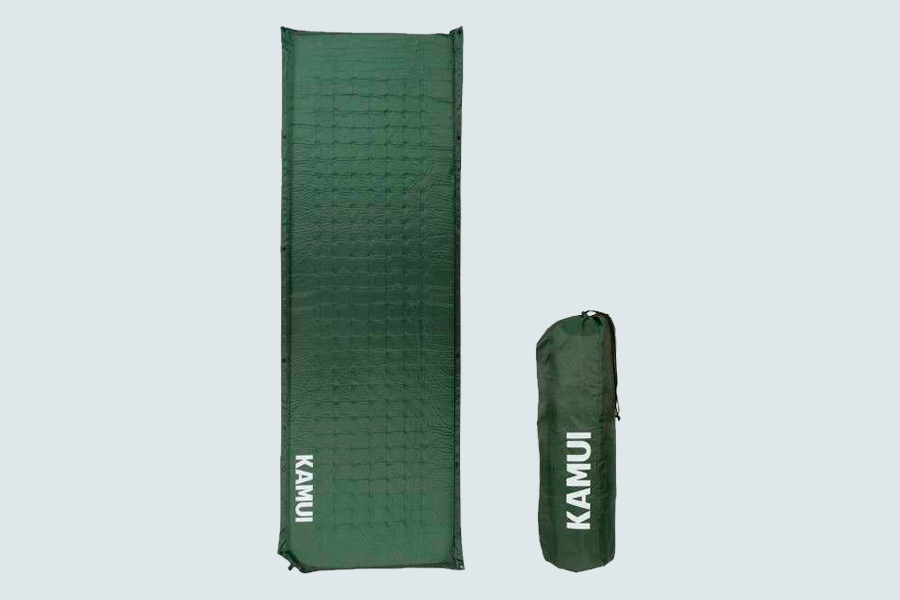

After we have looked at how to use a self inflating sleeping pad, its inflation, deflation, and care, we would like to recommend our favorite choice of camping pad: The KAMUI self-inflating sleeping pad. We’re not the only ones that think so, Klara from Mommysblockparty thinks so too. Here is what she says:


“I was able to try the self-inflating sleeping pad. I was a little skeptical since I’ve never had a self-inflating pad, but it worked! The mat is the perfect thickness to provide just enough support. The thickness also allows the mat to be stored very easily in the bag. It isn’t like some products you can’t get back into the bag after opening.”
Karla Adler from Mommysblockparty
Here are some of the benefits the KAMUI camping mat has to offer:
- Lightweight with just 3.5 pounds
- Comes in different colors (green and blue)
- R-Value of 5.7 makes it perfect for even winter camping
- Comes in a storage and compression bag
- Durable material
- Perfect for anyone with up to 6 feet high and 275 lbs weight
- Self-Inflating sleeping pad, just leave it and it will self inflate
- Connects and stacks up with other pads
- Quiet inflating valve


FAQ: How to use self-inflating sleeping pad?
Self-inflation is a feature of self-inflating sleeping pads, where a pad does its inflation by itself. It is accomplished as a result of the properties of open-cell foam and with a regulated pathway for air to enter.
Inflation time should take anywhere between 5 minutes to half an hour.
Self-inflation begins when the valve is opened, and no pad can inflate to the maximum. You should always add a few breaths for reaching optimum comfort level.
To overcome lethargic self-inflation of long-compressed foam, it’s helpful to prime the pad with a few breaths of air; it’s like giving a push-start to get the momentum going on the self-inflation.
Yes, self-inflating sleeping pads are very comfortable. on the market today there are super thick foam pads that isolate you from the ground as far away as 3 inches. In addition to this, you can inflate and deflate all pads to your liking.
Sleeping pads are not meant to be placed inside sleeping bags.
They are intended to provide insulation and prevent heat loss from the ground beneath you, and putting them inside sleeping bags will lessen their efficiency.
If your priority is comfort and insulation, the best thing to sleep on is a self-inflating sleeping pad. It has the hybrid properties of a foam pad and an air pad, making it a comfortable surface to sleep on, and this will assure you of a good night’s sleep while camping.
For added warmth and protection from hard rocks, thorns, or thistles, you may put a closed-cell foam pad, an outdoor blanket, a tarp, or a rubber mesh underneath your sleeping pad. Otherwise, choose a durable sleeping pad with durable materials and a high rebound foam that can stand the rigors of the outdoors.
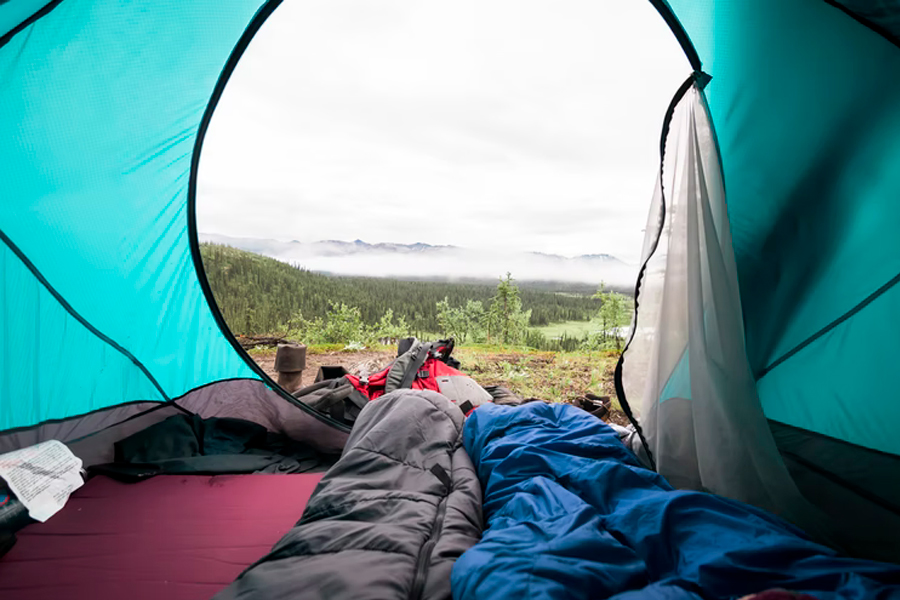

Conclusion
This was our short take on the basics of sleeping pads, after reading this you should know how to use a self inflating sleeping pad in the future. Our take included basics like inflation, use, care, storage, and deflation.
We from KAMUI hope our article helped you understand more and prepared you for your next camping trip.
Resources:
KAMUI Self-Inflating Sleeping Pad
- Connectable with multiple sleeping pads
- 4-season sleeping pad
- Provides great back support
- Comes with a storage bag
